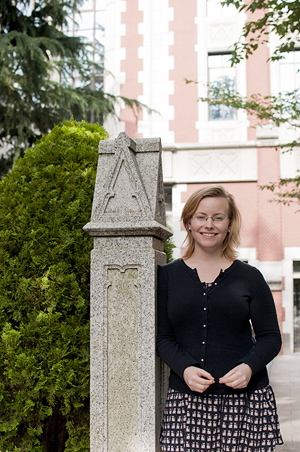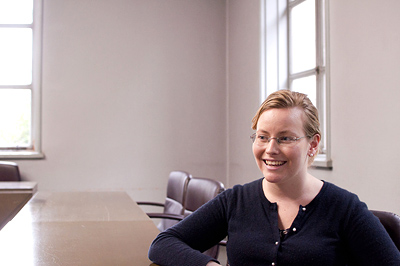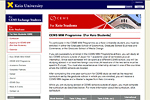Header start
Header start
- Home
- Student Life
- Student Voices
Helena Stenfors Virenfeldt (Sweden)
Helena Stenfors Virenfeldt (Sweden)
Content start
"Hiyoshi Campus has a really dynamic atmosphere"

Helena Stenfors Virenfeldt
Home country: Sweden
Exchange Student, CEMS Masters in International Management
Home CEMS Member School: Stockholm School of Economics
Swedish by birth, Helena Stenfors Virenfeldt is a truly international citizen, spending seven years in Dubai and living in the U.K. before entering the Stockholm School of Economics and coming to Tokyo on the CEMS Programme. Between rigorous CEMS courses offered at Keio and a hands-on business project at an influential Japanese corporation, she has still found the time to appreciate her experiences in Japan—cherry blossom season, onsens at Hakone, and 6 a.m. sushi being some of her most memorable.
What was your initial impression of Keio?
I liked the difference between the culture of Mita Campus and Hiyoshi Campus. The atmosphere at Mita is quiet and calm, a lot like my university in Stockholm, whereas Hiyoshi has a really dynamic, creative, and spontaneous atmosphere. As you walk around, you often run into bands, a capella singers, and even dance groups practicing around campus! The atmosphere at KMD (Keio Graduate School of Media Design) is also really vibrant and the focus of the school is very different from what I am used to—this is fun to see and the atmosphere is very positive. I also really like the Collaboration Complex at Hiyoshi Campus, which contains shops and a café, so you sometimes see local people walking around with their children. It is nice to see families being part of the school scenery.
What have you enjoyed about your course in particular?
I have really enjoyed the business project. As we are the first group of students, there were problems initially because neither the students nor the companies knew quite what to expect and so the projects were not clearly defined. This meant that with the mid-term assignment, we were redefining our assignment right up until a couple of days before the deadline, but this has improved a lot for the final project as both sides have got a better idea of what they want to achieve and what they need to do. For example, at first we (the students) waited to be given instructions, but now we are more proactive and ask questions when there is something that we don't understand. Our host company has received us very well and the staff are very friendly and encouraging towards the students. We have also received plenty of support from the staff at KMD; Professor Inakage and Assistant Professor Tokuhisa are very helpful and supportive and the CEMS team is very open-minded.
What challenges have you faced and how have you coped with them?
CEMS student groups (of students on the study term abroad) are normally around 40 people, so they often appoint a social secretary who organizes regular social events. As we were the first group and we were relatively small in number, we didn't have such a system, but students do get together to socialize at least once a week.

I made the most of the chances we had to meet people outside of the CEMS group, by searching out opportunities such as welcome events and student language exchanges. The CEMS students also share information about such events on their Facebook page.
The time difference can make you feel very far from home, so I found it was best to schedule meetings online in advance to chat with friends and family over Skype. I also had some difficulties with the language, but I found that some of the phrases we learnt in Japanese classes were useful and in any case a lot of things in Japan are self-explanatorily interesting, so you don't have to worry about not being able to read Japanese.
What was one of your favorite memories of Japan?
Once we went to a popular sushi restaurant in the morning and queued for about three hours for sushi! I never imagined that eating sushi at 6 a.m. would be something I would enjoy doing, but it was really good!
What would be your advice for future international students?
Try to speak to people who have been here before, so that you can get a proper idea of what it is like. It is also a good idea to try to learn some Japanese beforehand, especially some practical phrases to help you get around!
If you choose not to live in the student dormitory, I also recommend organizing some accommodation with a social atmosphere as it will make it a lot easier to meet people and make friends.
(This interview is from June 2012.)



